Хаас за Бразилия
Ромен Грожан:
In back-to-back weeks Haas F1 Team has made significant partnership announcements – first with PEAK Coolant & Antifreeze and BlueDEF Diesel Exhaust Fluid expanding its role with the team and then Rich Energy becoming title sponsor. What do these announcements say about the competitiveness and commercial viability of Haas F1 Team, especially considering the organization is only in its third year?
I think it’s very good news. I think a lot of teams are looking for big sponsors. The announcement of Rich Energy joining Haas F1 Team is really good news. It shows that the team is attractive to sponsors. Hopefully, these announcements are the first of many.
With only two races remaining, the midfield is as tight as ever, specifically among Haas F1 Team, Renault, McLaren and Force India. How would you characterize this battle, and do you find yourself looking at the time sheets to see where you stack up to the drivers on those teams?
We always look at the timesheet. The battle is quite tight, quite good. We lost a bit of ground at our home grand prix and in Mexico, which is a shame. We’re trying to make up for it, and we’ll be giving it 100 percent.
There’s no trophy for fourth place in the constructors’ standings, so why is it so coveted by teams outside of Mercedes, Scuderia Ferrari and Red Bull?
It’s got a big significance for us. Fourth or fifth would be a big achievement for Haas F1 Team in its third season of competition.
Haas F1 Team has proven quick at nearly every track it has raced on this year. Are there characteristics of the Interlagos circuit that you think will play into the strengths of the car and your strengths as a driver?
Yes. Interlagos should be a good grand prix for us. It’s a track I particularly like. I’m very much looking forward to going there.
Interlagos was resurfaced prior to the 2014 race. How much has the track changed since then and what do you expect this year with another year of weathering to the track surface?
The tarmac has been good but the curbs have been changed, which is a bit of a shame as it’s lost a bit of the spirit of Interlagos. Generally, it’s an amazing track. The tarmac – we now have a good understanding of it – so, hopefully, we’ll have a good weekend.
Interlagos appears to be a very physical track, and heat often plays a role in the performance of the car and the driver. Considering these variables, how do you attack the track?
It’s a pretty tough track with not much opportunity for a rest. Even in the straight lines you can’t rest as much as you would like. You’re at altitude as well, at 800 meters (2,625 feet), so coming from Mexico that’s nothing, but you’re still not at sea level. The weather can be challenging. It can be very warm and humid. It’s a pretty intense challenge but, at the end of the day, that’s what we’re looking for.
What is your favorite part of the Autodromo Jose Carlos Pace?
I like the Senna ‘S’, and the first few corners are pretty amazing.
Describe a lap around the Autodromo Jose Carlos Pace.
You go onto the pit straight and then big braking to go to the Senna ‘S’. Very tricky turn in on the left-hand side. You really want to be well placed for the right turn two, which sets you up for turn three and the second straight. Big braking to turn four, left-hand side, 90 degrees, a pretty good corner. Then you get to the middle part – turn five is a high-speed corner going up the crest. It’s tricky. Then it’s turn six and the hairpin on the right-hand side. We can’t use the curb as much as we used to. Turn seven is a left-hand side corner, no braking, just a lift off. It’s a bit of a strange one. The second hairpin is then on the right-hand side, a second high-speed corner going down the hill, prior to the last turn. It’s a left-hand corner where you really want to go early on the throttle because you’re facing a wall to go up to the finish line.
Whenever Formula One travels to Brazil, Ayrton Senna’s legacy is prominent. Of all his races, is there one that stands out?
Brazil is always special because of Ayrton Senna. He was one of the biggest names in Formula One. Interlagos is a special place. There’s so much history there. On raceday you’ve got so much support from the fans. I remember Ayrton winning there in 1991 when he couldn’t hold the trophy in the air because he was so tired and had the pain in his arms from driving.
Кевин Магнусен: During your recent travels in North America, you got to sample a 1,375 pound (624 kilogram), 750-horsepower winged sprint car with direction from three-time NASCAR Cup Series champion Tony Stewart at a dirt track in North Carolina. How was it?
I really enjoyed it. It was definitely the most fun I’ve had in a racecar for many, many years. It was just cool to try something so different to what I usually do. It was great to spend a bit of time with Tony and get some great tips from him.
How different was that sprint car from anything else you had driven, and how naturally did the skill of turning left to go right come to you?
Well, you do have some kind of skill as a Formula One driver, but we’re not used to drifting that much. We definitely prefer not to be drifting the car. In the sprint car, you try and really drift almost the whole lap. You’ve got as much downforce when you drift, or even more when you drift, than in a straight line. That’s very different to what I’m used to. Then, obviously, driving on dirt is something I’ve never done before. I just loved the whole experience. You sit on it like a John Deere, yet the thing has around 800 horsepower.
Stewart said you picked up the nuances of a sprint car pretty quickly and that you got to within a half-second of his time. How did his instruction help and was there anything that surprised you?
It surprised me how physical it was. It didn’t look physical from the outside, but when you got in, it was a lot faster than I expected it to be, a lot more powerful, and it had a lot more grip. I loved it.
Sprint cars are pretty rudimentary, especially compared to a Formula One car. Did you like that, as it definitely accentuates a driver’s ability?
It was great finding something completely new and having to really start from zero with a racecar again. I’m so used to the Formula One car now, you’re always just fine tuning and going backward and forward, just changing little things. This was completely new. You had to make up a completely new driving style, and just go about it step by step. I loved that process of moving your limits, finding new limits, and learning new things. It was great to go back to the roots and just enjoy a bit of fun in a racecar.
With only two races remaining, the midfield is as tight as ever, specifically among Haas F1 Team, Renault, McLaren and Force India. How would you characterize this battle, and do you find yourself looking at the time sheets to see where you stack up to the drivers on those teams?
The midfield fight is still intense, although the gap to Renault has increased. We’re still really keen to try and catch up, and we’ll do everything we can to maximize our chances against them. Behind us in the championship we’ve got some breathing room. We know that things can turn around quickly. We want to score as many points as we can.
There’s no trophy for fourth place in the constructors’ standings, so why is it so coveted by teams outside of Mercedes, Scuderia Ferrari and Red Bull?
It’s the ‘best-of-the-rest’, so there’s a lot of pride in it. It’s a very tight battle in the midfield. We shouldn’t really be fighting Renault in Formula One, because they have a lot more resources, a big factory and a lot more people involved. With what we’ve got, we use it a lot better than they do. That’s already something to be proud of. On average, we’ve been quicker than them this year so, of course, it’s disappointing to be behind them in the championship at this point. We just have to build from here. We’ve taken a step forward this year and we’ve proved that we can build a car that’s capable of best-of-the-rest. We just have to minimize the mistakes, score points and get the results we deserve to have more points regularly.
Interlagos appears to be a very physical track, and heat often plays a role in the performance of the car and the driver. Considering these variables, how do you attack the track?
It’s a great track. It’s one of the old-school circuits with a good flow to it. It has banking, it goes up and down – it’s not just a track full of tarmac runoffs. It’s a fun track to drive. I’m looking forward to racing there. You can overtake there, but it’s not easy. You really need to get qualifying right. I think we have as good a chance there as we do any other race.
What is your favorite part of the Autodromo Jose Carlos Pace?
The Senna ‘S’ bend. It’s a nice flowing part of the track."
Describe a lap around the Autodromo Jose Carlos Pace.
Legendary and challenging.
Гюнтер Щайнер: Last year at this time, Formula One and the FIA jointly announced a direction for power unit regulations in 2021, including a higher-revving engine (3,000 rpm higher), removal of the MGU-H, a more powerful MGU-K with manual driver deployment and a single turbo with dimensional constraints and weight limits. Granted, you’re not an engine manufacturer as you receive your engines from Ferrari, but where are we in regard to this direction and, after a year into its planning, do you believe it’s on track to deliver the intended results?
The regulations for the engines in 2021, they are not completely decided yet. There are still talks going on. In principle, I think the engines will be staying the same as they are now, or very close to it. I think the manufacturers are working to save some costs. But, the decision has not been made yet.
Much has been made about the sound of Formula One cars, specifically that they need to be louder, like they used to be. What are your thoughts?
I think we’ve achieved a good level of noise. To be a little bit noisier would be nice, but I think we’re good where we are.
Of all the elements mentioned in the direction of the 2021 power unit regulations, is the most important element cost?
It’s a very important element in this because for 2021 we’re trying to introduce a cost cap. The engine is a big cost factor for each team. The lower it is, the better it is, as we can make more developments somewhere else.
Once all the elements of the 2021 power unit regulations are agreed upon, it’s about a two-year development process. How does that development process factor into the design of your 2021 racecar?
As soon as we get the regulations – and there is no defined date yet when we will get them – we will decide when we put focus on the 2021 car. We obviously have to manage the cars we are racing, and if the regulations come out in 2019, we still need to develop our car for 2020. Until we have the final regulations – technical and sporting – we cannot make a decision on when we start development on the 2021 car.
Speaking of future car design, how is development coming on your 2019 car, especially considering there are some significant new rules for next year, which include a wider and simpler front wing, a tidier front brake duct assembly and a wider, deeper rear wing devoid of endplate louvers?
The development is coming along nicely. As I always say, as much as I can be happy with what we are doing and what our team is doing to develop, I have no idea what the other teams are doing and how far down the line they are, or how much aero development they’ve done and the downforce they’ve achieved. The only way we will see that is in Spain next year when we go testing in February.
Has the tight battle for the top of the midfield made developing your 2019 car a little harder because your current standing in the constructors’ ranks is so tight?
We consciously decided before the summer break to develop the 2019 car, so that doesn’t distract us at all.
With only two races remaining, the midfield is as tight as ever, specifically among Haas F1 Team, Renault, McLaren and Force India. How would you characterize this battle, and do you find yourself looking at the time sheets to see where you stack up in relation to those other teams?
It’s very tense in the midfield, and I think it’s a very interesting battle. I would always like to be on top of the battle, but it changes all the time, and you’re really focused on that one during every practice, qualifying and race to see how close you are to your nearest competitor.
In back-to-back weeks Haas F1 Team has made significant partnership announcements – first with PEAK Coolant & Antifreeze and BlueDEF Diesel Exhaust Fluid expanding its role with the team and then Rich Energy becoming title sponsor. What do these announcements say about the competitiveness and commercial viability of Haas F1 Team, especially considering the organization is only in its third year?
I think it says it all. With success, you get interest from companies to partner up with you because you get good exposure. Everybody likes to be with successful people.


















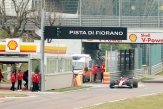
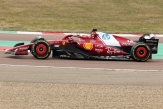
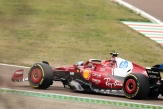
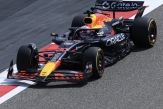
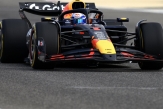
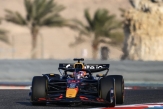

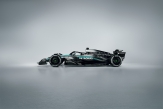
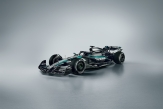
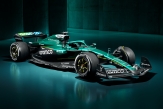
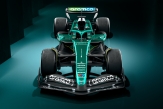
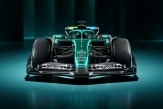
.jpg)
.jpg)
.jpg)

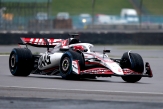

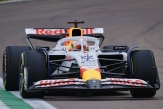
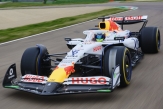
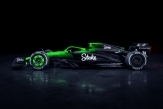
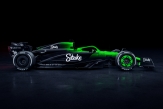

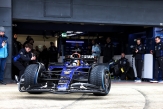
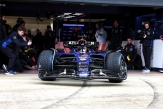
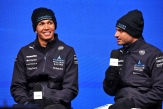

02/12/2025 от Огнян Тенчев (drJeckyll), няма коментари